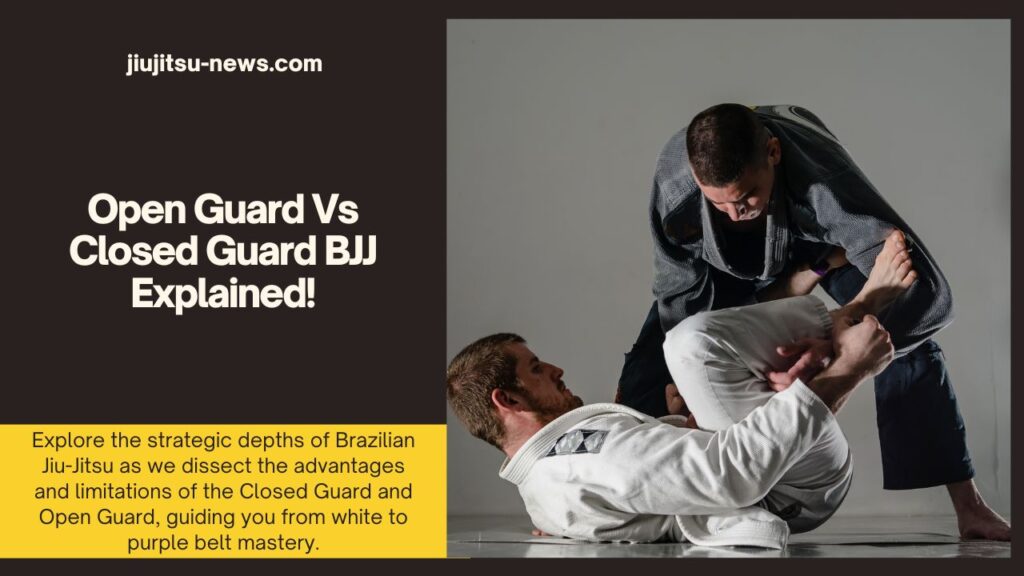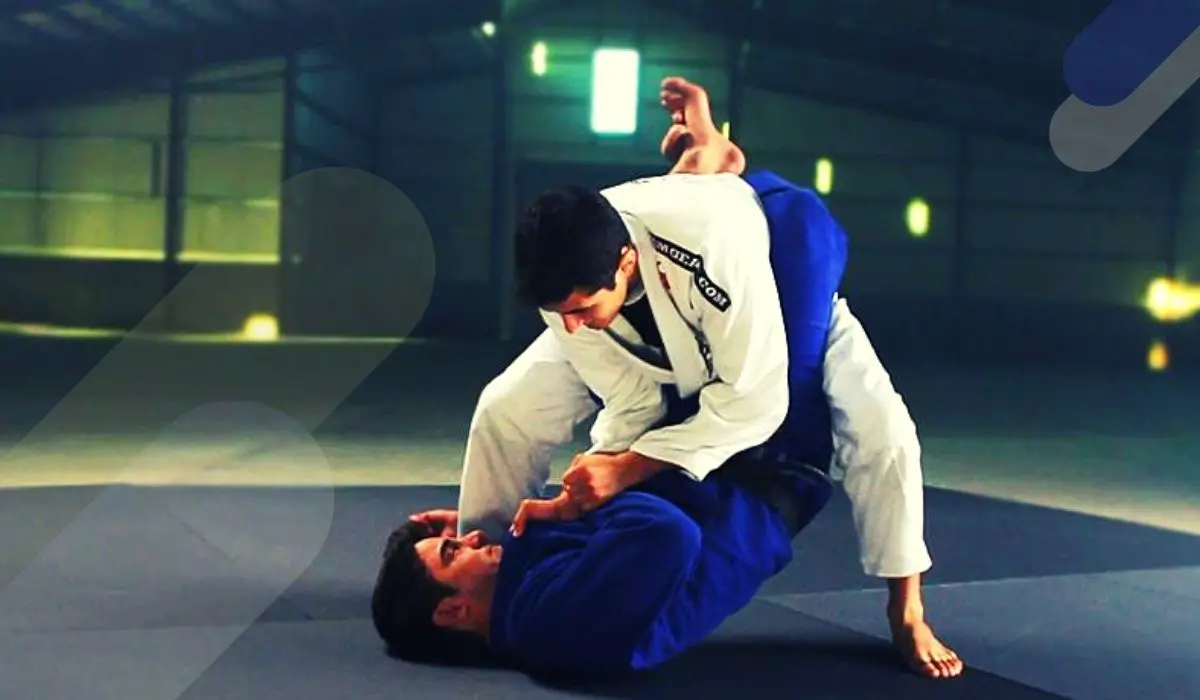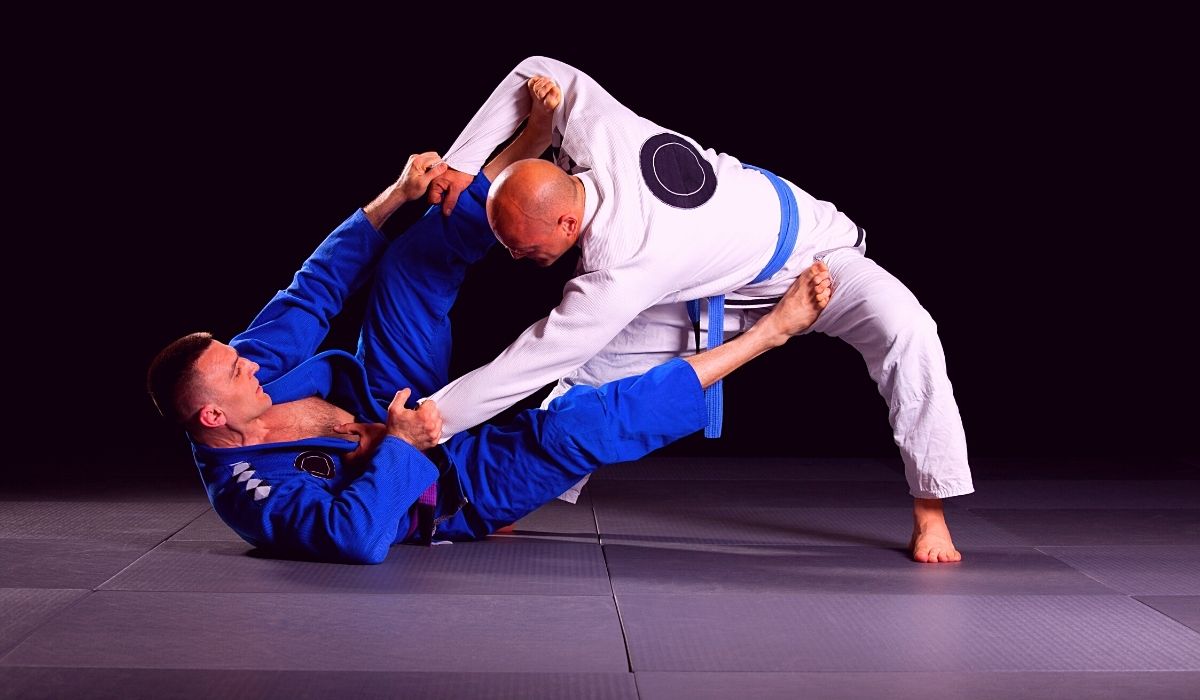Closed guard vs open guard? The closed guard and the open guard BJJ are among the basic positions in jiu-jitsu martial arts that any practitioner should learn.
Besides, these two guard types give the player some great tools from the bottom and the top game. Thus, the jiu-jitsu player could sweep, submit, and control his opponent, which allowed him to build a solid offensive and defensive grappling game.
In this article, we will discuss and put a face to face the BJJ open guard and the close guard. We will review the pros and cons of these two guards in competition and self-defense martial arts. Have fun!

Should I Play An Open Guard Or A Closed Guard in Jiu-Jitsu?
The open guard BJJ and the closed guard will teach you several martial arts lessons, where you will learn a bunch of jiu-jitsu concepts like distance managing, control before submission…
So, from the white belt to the purple belt, you should play several kinds of BJJ guards before deciding which suits your body type and gameplay…
Closed Guard and Open Guard: Meaning

Closed Guard Meaning
The closed guard is one of the essential guards taught in Brazilian jiu-jitsu. It’s primarily used by BJJ beginners and high-level competitors. It’s a tiny position that every beginner white belt should have.
Otherwise, the full or closed guard is a position in which the practitioner’s legs are closed around the opponent’s waist (hips). The practitioner should also grip the sleeve, collar, etc.
Open Guard BJJ Meaning

The open guard is among the primary and most powerful BJJ positions where the practitioner’s legs aren’t closed around the opponent’s waist.
Open Guard BJJ Vs Closed: Pros

Closed Guard Pros
- The closed guard is classified among the top offensive guards in Brazilian Jiu-Jitsu.
- There is close distance with many connections within your opponent that give you strict control over your opponent.
- It gives the BJJ player more reach to several submissions and sweeps, including chokes (cross chokes …), shoulder locks (omoplata …), arm locks (armbars, wristlocks …), and scissor sweeps.
- The closed guard gives you more leverage when submitting the opponent’s upper body. Breaking the opponent’s posture allows you to do this.
- It is one of the most challenging guards to pass in Jiu-Jitsu in both gi and no-gi.
- A white belt performs many closed guard techniques correctly in a short training period.
Open Guard Pros
- The open guard forces the BJJ player to be more creative, and today, there is unlimited creativity at the open guard. So, we see many new jiu-jitsu techniques and variations, such as the lapel guard game.
- It gives you unlimited game transitions. Therefore, you can transit to the Dela Riva guard, lasso guard, spider guard, X guard, and other Brazilian jiu-jitsu positions.
- It allows you to effectively perform several sweeps and attacks, including leg locks, triangles, armbars, and omoplata.
- The open guard is safer in self-defense and MMA because it is far from your opponent. Thus, you’re almost safe from striking reach.
- The open guard is primarily used in gi and no-gi grappling at the advanced level.
BJJ Open Guard Vs Closed: Cons!

Closed Guard Cons
- In MMA, UFC, and self-defense, the closed guard can get you struck quickly due to close striking distance. So, a lot of knockouts happen at the closed guard as well as at the open guard.
- Sometimes, the bottom player uses the closed to block the game, especially if he’s winning the match. In this case, jiu-jitsu becomes a boring game.
Open Guard Cons
- The BJJ open guard may be one of the most accessible guards to pass when playing against an early white belt, blue belt, or even purple belt, depending on the variation. Besides, this is arguably true for the classical open guard with both feet on the opponent’s hips or one foot on the hips and the other yielded otherwise.
- There are no body connections at the jiu-jitsu open guard position, contrary to the closed guard, which has connections that make everything readily available.
- A white belt may get damped when playing the classic open guard due to the lack of control. So it takes more time to deal with it.
Conclusion
As a Brazilian jiu-jitsu practitioner, learning the basics of the open and closed guards is essential.
These highly effective guards can be used for both defense and offense. The closed and open guards offer many good transitions, sweeps, and submissions, but no BJJ position, submission, or transition is 100% bulletproof.
Each has its advantages and disadvantages. Advanced BJJ students can easily switch from the open to the full guard or vice versa.




